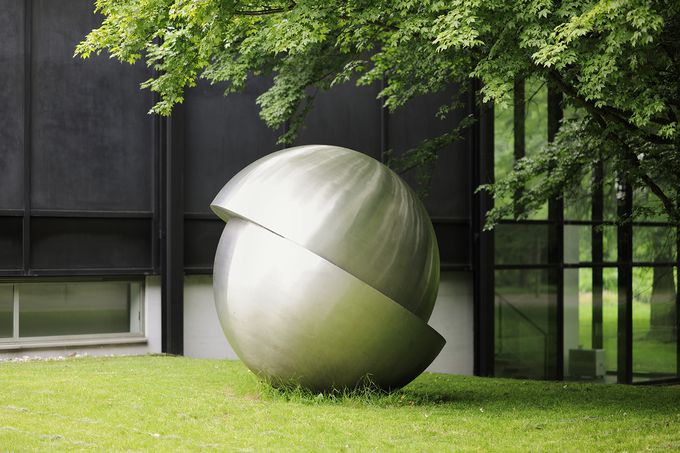Public Art Ruhr
Art is never uncontroversial. Particularly when in the public space, art triggers a range of different opinions, sparking controversy. It is exactly this dialogue that we are looking to promote, because it is something which refines our perception of the world around us; the diversity of our region.
Walter Smerling and Ferdinand Ullrich, former speakers for the RuhrKunstMuseen's Public Art Ruhr project group, in Public Art Ruhr, a book which was published in 2012.
The Metropolis Ruhr's Flair for Public Art
What would the Metropolis Ruhr be without public art? It would lack the creative elements which are a result of its urbanity. Luckily, the area – which bears the marks of the coal and steel industries – was quick to catch on to the outdoor art trend. Since the 1960s, the Ruhr area has been upholding the belief that public art is a statement. The Metropolis Ruhr has stood by the idea of providing experimental, visionary interventions in public spaces. Public art acts as a medium through which to bring the beating heart of the Metropolis Ruhr into the foreground – today, tomorrow and in the future. The provision of art for all, free and outdoors, is at the heart of everything. This spirit has already had a groundbreaking effect once before. During the Internationale Bauausstellung IBA (1989 to 1999), which promoted structural change, brownfield sites and renatured areas of the landscape were updated for the first time through so-called "landmark art" – art which was open air, freely accessible and which often reached for the sky.
Free, outdoor Art: Public Art Ruhr
This city-spanning "Open-Air Ruhr Gallery" can be found in hundreds of locations across 53 towns and cities – in squares, parks and landscapes or on spoil tips or former coal mines – anywhere between the Emscher and the Ruhr rivers. Packed with big names from the international sculpture scene, this must-see exhibition is to be found out in the open. It features works by stars such as Richard Serra and Mario Merz, as well as by Maria Nordmann and Giuseppe Spagnulo, Ulrich Rückriem and Francois Morellet. Robust in appearance and bold in presence, these sculptures, sometimes even illuminated, often have the effect of creating a monumental gesture across a great distance, : these artworks act as a type of Who's Who, displaying the historic evolution of significant public art, and encourage public discussion. The debate surrounding Terminal, a sculpture by American steel sculptor Richard Serra which was installed near the main train station in Bochum in 1979, is the stuff of legend. Controversial at the time, the 12-metre-high, remarkably crooked structure – made from 100 tonnes of COR-TEN steel and accessible to passers-by – attracts art tourists from all over the world with its surprisingly square framed view of the sky. Nowadays, public art in the Metropolis Ruhr has become one of the more prominent trademarks of this city of cities.
The Ruhr Kunst Museen für Public Art Ruhr
Displaying this treasure trove of public art in a creative manner, initiating dialogues, and ensuring that this valuable artistic heritage is preserved for the future: these are just some of the goals that the RuhrKunstMuseen, a network of 20 museums which has been active since 2010, has set itself. In 2012, this was made into an impressive PublicArtRuhr guidebook, which features 100 texts on 100 selected artworks. The Essen-based Brost-Stiftung helped to publish this ambitious declaration of love to aesthetic sightseeing.
The "Neuenthüllungen" Rescue Package
But what happens when public art suffers due to financial strain and a lack of acceptance; when, no matter whether made from steel, bronze or concrete, the graffitiing, defacement and overlooking of these works is rampant? This is a common risk among art which is an easy target. This is where, as one of the outcomes of Ruhr's appointment as European City of Culture in 2010, the 20 RuhrKunstMuseen come into play. A joint rescue package for outdoor art in need of refurbishment was put together using additional means from the Brost-Stiftung. As of 2013, this project has been put into action under the name Neuenthüllungen – "new unveilings" – lobby work for street art. With the aim of raising awareness and creating empathy for stumbling blocks, the RuhrKunstMuseen's working group for art in the public space selected ten works which would be restored and handed over to the public for a second time.















































